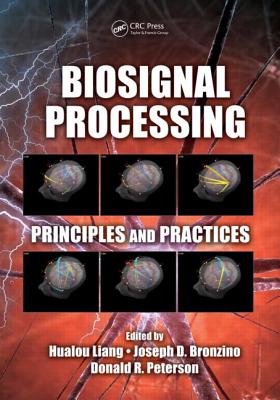This book provides state-of-the-art coverage of contemporary methods in biosignal processing, with emphasis on brain signal analysis. The topics covered in this book reflect an ongoing evolution in biosignal processing. As biomedical datasets grow larger and more complicated, emerging signal processing methods to analyze and interpret these data have gained in importance. This book discusses the process for biosignal analysis and stimulates new ideas and opportunities for developing cutting-edge computational methods for biosignal processing, which will in turn accelerate laboratory discoveries into treatments for patients.
With the rise of advanced computerized data collection systems, monitoring devices, and instrumentation technologies, large and complex datasets accrue as an inevitable part of biomedical enterprise. The availability of these massive amounts of data offers unprecedented opportunities to advance our understanding of underlying biological and physiological functions, structures, and dynamics.
Biosignal Processing: Principles and Practices provides state-of-the-art coverage of contemporary methods in biosignal processing with an emphasis on brain signal analysis. After introducing the fundamentals, it presents emerging methods for brain signal processing, focusing on specific non-invasive imaging techniques such as electroencephalography (EEG), magnetoencephalography (MEG), magnetic resonance imaging (MRI), and functional near-infrared spectroscopy (fNIR). In addition, the book presents recent advances, reflecting the evolution of biosignal processing.
As biomedical datasets grow larger and more complicated, the development and use of signal processing methods to analyze and interpret these data has become a matter of course. This book is one step in the development of biosignal analysis and is designed to stimulate new ideas and opportunities in the development of cutting-edge computational methods for biosignal processing.
Get Biosignal Processing by at the best price and quality guranteed only at Werezi Africa largest book ecommerce store. The book was published by Taylor & Francis Inc and it has pages. Enjoy Shopping Best Offers & Deals on books Online from Werezi - Receive at your doorstep - Fast Delivery - Secure mode of Payment
 Jacket, Women
Jacket, Women
 Woolend Jacket
Woolend Jacket
 Western denim
Western denim
 Mini Dresss
Mini Dresss
 Jacket, Women
Jacket, Women
 Woolend Jacket
Woolend Jacket
 Western denim
Western denim
 Mini Dresss
Mini Dresss
 Jacket, Women
Jacket, Women
 Woolend Jacket
Woolend Jacket
 Western denim
Western denim
 Mini Dresss
Mini Dresss
 Jacket, Women
Jacket, Women
 Woolend Jacket
Woolend Jacket
 Western denim
Western denim
 Mini Dresss
Mini Dresss
 Jacket, Women
Jacket, Women
 Woolend Jacket
Woolend Jacket
 Western denim
Western denim
 Mini Dresss
Mini Dresss






























































